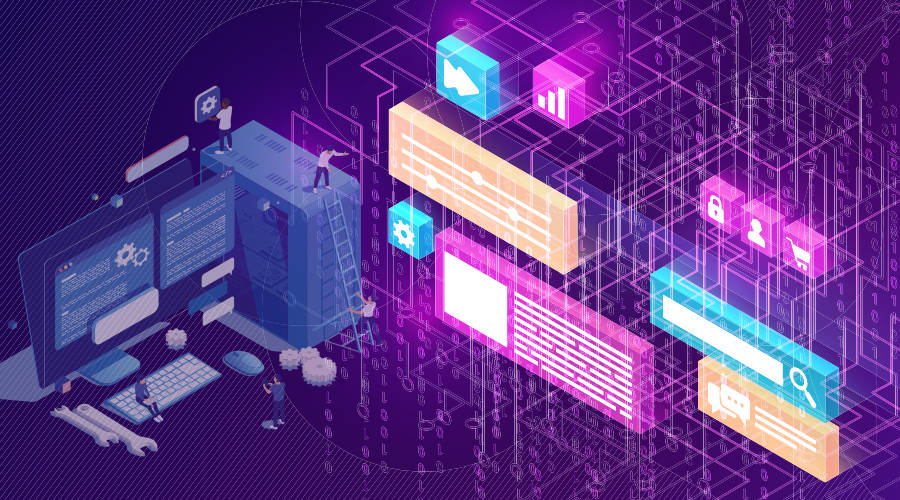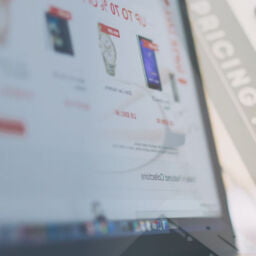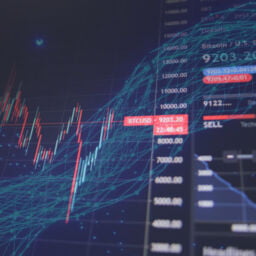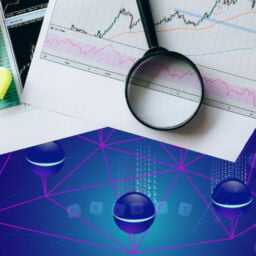
How you can improve your business success using data scraping for media monitoring, social listening, and news aggregators.
In 2022, over 2.91 billion users a month were active on Facebook. Today, 40% of Gen Z are personally influenced by the brands they see on TikTok. Furthermore, according to the latest Reuters Institute digital news report, younger groups don’t show a strong connection with news brands’ websites and apps but prefer to access news via search, mobile aggregators, and social media due to their ubiquity and convenience.
So, it’s not a surprise that, in 2021, 51% of brands used social media monitoring (or social listening) in their marketing efforts (a percentage that grew by 9% in 2022).
How Users Access News
In this scenario, finding and gathering relevant stories to feed news aggregators and search services is more valuable than ever. It's also strategically effective to monitor social media and other online sources to know your customers better, find areas of improvement, and generate more sales.
Let's dig into it by explaining the media monitoring advantages, methods, and web scraping benefits for news and social media monitoring services and tools.
Media Monitoring and Web Scraping
Media monitoring involves tracking and gathering information from various online sources such as news websites, blogs, social media platforms, forums, broadcast channels, and print publications.
News and social media monitoring helps you stay updated on mentions, discussions, and trends related to specific topics, brands, individuals, or events. Through web scraping, you can automate the process of extracting relevant data from hundreds of sources, which can reduce time, errors, and office and labour costs, compared to manual monitoring.
Media monitoring is another application of data scraping. Web scraping techniques allow you to retrieve data, such as headlines, articles, comments, social media posts, and other relevant information. This data can then be analysed and monitored to gain insights into public opinion, brand reputation, market trends, or any other niche topics you're interested in.
Why Use Media Monitoring
Media monitoring is proving to be a valuable activity for modern data-driven companies. According to research, the market is huge and expected to grow by 16.5% by 2029.
Here are ten main advantages (and applications) of media monitoring.
Outsourced vs In-House Media Monitoring
Whether to use outsourced media monitoring services or conduct media listening in-house depends on various factors. This comparison table can help you make an informed decision about the right approach for your business.
| Advantages | Outsourced Media Monitoring | In-House Media Monitoring |
|---|---|---|
| Expertise and Resources |  Media monitoring service providers specialise in collecting, analysing, and reporting media data. They have dedicated teams, expertise in monitoring tools, and access to a wide range of media sources. Outsourcing allows you to leverage their knowledge and resources without investing in an in-house team. | |
| Scalability |  Media monitoring services can scale their operations based on your needs. They can handle large volumes of data, monitor multiple sources, and provide customised reports and analyses. For large-scale media monitoring projects, outsourcing can be more convenient and flexible. | |
| Access to Advanced Tools |  Outsourced media monitoring services often have access to advanced monitoring tools, analytics platforms, and technologies that may not be available in-house. They stay updated with the latest industry trends and tools, which can enhance the quality and efficiency of media monitoring. | |
| Control and Customisation |  |  Handling media monitoring in-house provides you with direct control over the entire process. You can customize the monitoring criteria, prioritize specific sources, and tailor the analysis to meet your unique requirements. It allows for greater flexibility in adjusting the monitoring strategy as needed. |
| Confidentiality and Security |  |  When you deal with sensitive or confidential information, in-house media monitoring can provide better data privacy and security. It reduces the risk of data breaches or leaks associated with sharing information with an external provider. |
| Domain Knowledge |  When your industry or niche requires specialised knowledge or domain expertise, in-house monitoring allows you to develop a more in-depth understanding of the media landscape specific to your business. Internal team members may better comprehend industry jargon, nuances, and context. This can lead to a more accurate analysis. | |
| Costs |   Outsourced media monitoring can be cost-effective for small or medium-sized businesses. Instead of investing in monitoring tools and software licenses and hiring and training a dedicated team, you pay external providers. Costs vary depending on the scope and required analysis level. |   Depending on the scale and complexity of your media monitoring needs, an in-house team may be cheaper. This is particularly true if media monitoring is a critical and ongoing aspect of your business operations. In this case, the cost of outsourcing would be substantial in the long run. |
Media Monitoring Methods
You can perform media monitoring manually by reviewing media sources individually. But this process is often automated using tools and technologies, such as web scraping, social media listening tools, and media monitoring platforms. These tools help you efficiently collect, analyse, and organise large amounts of data from various sources.
There are several methods and techniques for media monitoring. Here are some common approaches used in media monitoring.
Manual Monitoring
This involves manually reviewing and tracking media sources such as news websites, newspapers, magazines, TV channels, radio stations, social media platforms, and blogs. This requires human effort to search, read, and analyse the content. Prepare to have big offices or a legion of remote freelancers…and a lot of time to spend (will you complete the tasks in time?)
Social Media Monitoring
This method focuses on social media platforms like Twitter, Facebook, Instagram, LinkedIn, TikTok, and YouTube. Social media monitoring tools help you track brand mentions, hashtags, keywords, user sentiment and engagement.
Sentiment Analysis
This method analyses the sentiment or emotional tone expressed in media content. It uses Natural Language Processing (NLP) techniques to classify text as positive, negative, or neutral. Sentiment analysis helps you understand public opinion, brand sentiment, and customer feedback.
Competitive Intelligence
You can leverage media monitoring to track and analyse your competitors' media coverage. It helps gain insights into their strategies, product launches, marketing campaigns, and industry trends to make informed decisions and stay ahead in the market.
Broadcast Monitoring
It focuses on monitoring TV and radio broadcasts. Specialised tools and services can capture, transcribe, and analyse broadcast content to track mentions, interviews, discussions, and news segments related to specific topics or brands.
RSS Feeds
RSS (Really Simple Syndication) feeds allow users to subscribe to content from various sources, such as news websites or blogs. Media monitoring tools can utilise RSS feeds to collect and organise the latest updates and articles from different sources in a centralised manner.
Media Monitoring Services
You can pay a specialised company for media monitoring solutions and services. They combine automated tools, algorithms, and human analysts to track and analyse media sources on your behalf. You get customised reports and insights based on specific requirements.
Web Scraping
Web scraping is an automated method that uses software or scripts to extract data from websites. Web scraping tools can extract specific data like headlines, articles, comments, and social media posts from news sites, blogs, forums, and other online sources.
Automated tools and services have made media monitoring more efficient and scalable to gather and analyse large amounts of data from diverse sources. You can use one or more of these methods (depending on your needs and goals).
How Web Scraping Can Help Media Monitoring
Web scraping can support media monitoring by automating data gathering from various online sources. Here's how web scraping can be technically beneficial for media monitoring.

Customised, Scalable, Real-time Data Coverage and Monitoring
With web scraping, you can monitor tons of media sources simultaneously and instantly. By scraping multiple websites or social media platforms, you can collect data from various publishers, journalists, influencers, or users, providing a comprehensive view of the media landscape.
You can set up scraping scripts to fetch data at regular intervals or in response to specific triggers to stay updated on breaking news, trending topics, or immediate mentions. This automation saves time and effort compared to manual monitoring.
You can also define specific criteria and keywords to monitor. This allows you to scrape data based on topics, brands, industry keywords, or any other parameters relevant to your media monitoring goals. This customisation ensures that you focus on the best data for your analysis.
Structured Data and Integration With Analysis Tools
Web scraping can extract data in structured formats such as CSV, JSON, or Excel, making it easier to process, analyse, and visualise the collected data.
You can then easily integrate this scraped data with various data analytics tools or platforms. You can use data analytics software, natural language processing (NLP) libraries, or sentiment analysis tools to derive insights, detect trends, or perform sentiment analysis on the collected media data.
Your Next Step
A tailored web scraping solution can unlock the power of media monitoring for your business, service or software. All you need is to create a scraping code optimised for your needs.
We can take care of the whole programming and data management process. And soon, you will do that by yourself through a no-code and low-code visual tool and browser extension for Chrome and Firefox.
Book a free consultation with data experts
Find & gather millions of opinions & reviews
Do it without tech skills and expensive personnel through a DIY tool.
Disclaimer: Always respect user privacy and copyright, follow ethical data scraping practices, and abide by the terms and conditions of the websites or platforms you're scraping data from, as unauthorized data extraction may lead to legal or privacy issues. Therefore, ensure that your data collection and analysis methods are compliant. Furthermore, data can be noisy, unstructured, and constantly changing. Therefore, use a tool or service that can handle the volume and variety of data from multiple web sources. This article is for information purposes only and not intended as legal advice. Consult a lawyer for complete knowledge of local and international laws.
Source references: Reuters Institute | Finance Online | Social Media Today
Featured image by vecstock


















[…] By Denis Giuffrè – WebRobot Marketing Big Data Data Analytics Marketing […]
[…] Web scraping allows your travel listing company to gather data from hotel booking platforms, vacation rental websites, and other relevant online sources to eventually create a centralised platform or database of the best accommodations. Data can include property details, amenities, pricing, availability, and customer reviews. […]